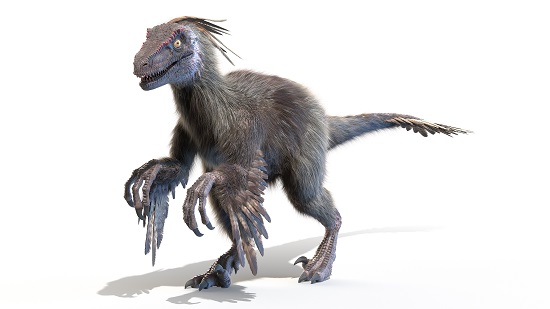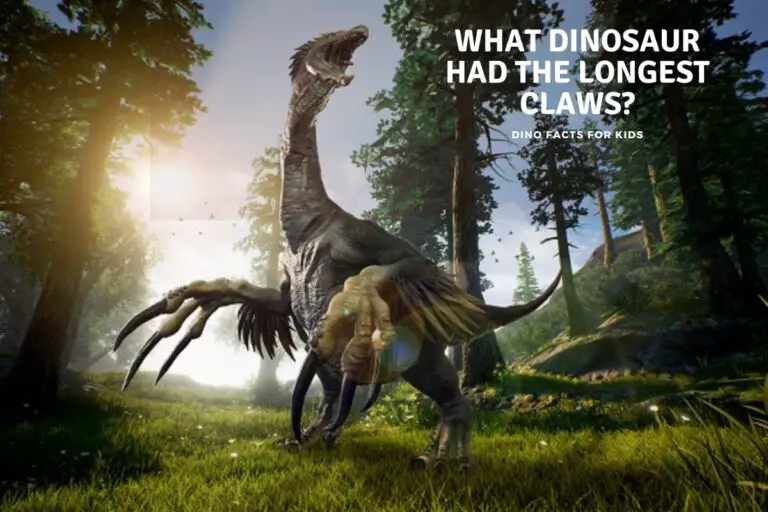Why Did Velociraptors Have Wings?
Since there impressive debut on the big screen in Jurassic Park Velociraptors stand out as one of the most talked about dinosaurs of all time. Despite their portrayal in popular media as 6ft tall scaly dinosaurs, Velociraptors had a feature that surprises many: feathered wings. But why would a creature, not known for flight, possess wings?
Velociraptors had wings for reasons beyond flight. Theories suggest their wings were used for display and communication, temperature regulation, and aiding in hunting. This feature also signifies a crucial evolutionary link between dinosaurs and birds.
The aim to give some answers to this question in the article below as we give some insights into the world of dinosaurs, evolution, and the unique relationship between these ancient beasts and the birds we see today and of course answer why velociraptors had wings!

Background Information
The discovery of feathers on Velociraptors was a game-changer in our understanding of these intriguing dinosaurs. Although it certainly wasn’t the first dinosaur to be found with feathers and all the way back to 1859 scientists like Thomas Huxley had been suggesting there was a link between dinosaurs and birds.
in the case of velociraptors, fossils found in Mongolia in the 1990s first showcased this surprising detail. The existence of feathers on these dinosaurs showed that they belonged to a group of dinosaurs called the maniraptoran theropods, which are known for their close evolutionary ties with birds.
Not all maniraptoran theropods could fly, and it is not currently thought that velociraptor would have been able of flight, or even controlled falling ( though there is a video showing this in Prehistoric Planet 2) but their bird-like characteristics provide a definite focus for further study and research.
These features included not just feathers, but also a wishbone, a bird-like nesting behavior, and possibly even a high metabolic rate. So the question we are looking at today, if they didn’t fly what did velociraptor use its wings for?
Why Did Velociraptors Have Wings?
The purpose of wings in dinosaurs, especially the Maniraptoran family, is still widely debated. So we have put some of the more common findings and thoughts of the purpose of velociraptors wings below.
Did Velociraptors use their wings for Communication?
One popular theory, and perhaps the most common, is that Velociraptors used their wings for display and communication purposes. In the animal kingdom, it’s common to find species using physical features to communicate including dinosaur relatives the birds.
For instance, peacocks use their brilliant plumage to attract mates and deer display their antlers to intimidate rivals. Velociraptors might have employed a similar strategy, though perhaps not quite so beautifully!
Their wings could have been decorated with vibrantly colored feathers, which were displayed to impress potential mates or to establish dominance within their group.
Evidence supporting this theory can be seen in the fossils of other feathered dinosaurs, which sometimes show signs of what could have been colorful patterning and we look at the color of dinosaurs, that we know, here on the site. You can follow the link above.
Did Velociraptors use their Wings for Thermal Regulation
Another theory suggested is thermal regulation. Like modern birds and mammals, dinosaurs were likely warm-blooded, maintaining a consistent internal body temperature.
Feathered wings could have played an important role in this process. In cooler weather, wings could be folded in, creating an insulating layer to trap body heat. In contrast, during warmer periods, spreading their wings could have allowed for heat dispersion, much like elephants use their ears.
Such temperature regulation would have been particularly advantageous for Velociraptors, considering they inhabited what is now the Gobi desert, a region known for its extreme temperature fluctuations.
Did Velociraptors use their Wings for hunting?
The third theory suggests that Velociraptors used their wings to aid in hunting. These dinosaurs were likely agile predators, but chasing and capturing prey requires a delicate balance between speed and stability.
Having wings could provide that much-needed balance. Like a tightrope walker using a balance pole, Velociraptors could have used their wings to stabilize themselves during high-speed chases.
Additionally, wings could have served another purpose: corralling prey. By flapping their wings and creating a visual barrier, Velociraptors might have been able to herd or frighten their prey into desired locations, possibly for ambushes much like lions do today.
Despite the differing theories, it’s clear that the wings of Velociraptors would have served practical purposes beyond flight.
Could Velociraptors Fly?
Despite having feathered wings, most paleontologists agree that Velociraptors were likely not capable of flight. Their wings lacked the size and strength necessary for powered flight as seen in modern birds or even the dinosaurs that could fly or glide.
The structure of their feathers also differed, being more primitive and less aerodynamic compared to those of flying birds.
Moreover, the body size and weight of Velociraptors are far greater than most flying birds today, suggesting that even with wings, they would have had difficulty achieving and maintaining flight.
Also, there’s no evidence in the fossil record of any adaptions related to flight such as a large keel for flight muscle attachment.
So while Velociraptors had feathered wings, it’s more than likely that they remained grounded, using their wings for other purposes as we detailed above.
Velociraptor Wing Anatomy (150 words)
The wings of a Velociraptor were a blend of dinosaur and bird-like features. The bone structure of their arms, to which the wing feathers were attached, resembled in some ways that of modern birds.
They had a series of long, slender bones akin to the ones forming the ‘hand’ of a bird’s wing.
Fossils even show evidence of quill knobs, bony protrusions where the flight feathers would have anchored, providing direct evidence of the presence of feathered wings.
Interestingly, their wrists had a semi-lunate carpal, a half-moon shaped bone allowing for a swiveling motion, similar to a bird folding its wings.
However, their wings lacked the muscular structure and size needed for flight, indicating these wings had a different purpose.
Velociraptors: The Link Between Dinosaurs and Birds
The existence of wings on Velociraptors and other dinosaurs is helpful in understanding the evolution of birds.
While the wing structure of Velociraptors wasn’t suitable for powered flight like in modern birds, it does display early adaptational attempts.
Beyond just wings, there are other shared characteristics between Velociraptors and birds. For example, both have hollow bones, a trait that reduces body weight – essential for flight.
Velociraptors also possessed a keel-like structure on their chest, similar to the breastbone to which flight muscles attach in birds. Their wrists were semi-lunate, allowing for a swiveling motion, much like a bird folding its wing.
These shared features are tangible evidence of their close evolutionary lineage, strengthening the theory that birds descended from theropod dinosaurs if not specifically then at least similar to Velociraptors.
The Importance of Fossil Evidence
Fossil evidence plays a crucial role in shaping our understanding of Velociraptors and their winged feature. Discoveries made over the years have revealed much about their appearance and possible behavior.
Fossils, called fighting dinosaurs, unearthed in Mongolia depicted a Velociraptor locked in combat with a Protoceratops, providing us with crucial clues about their predatory nature.
Equally impressively, fossils showing quill knobs – the attachment points for wing feathers – confirmed that Velociraptors were indeed feathered creatures.
Fossil evidence not only allows us to confirm the presence of wings in these dinosaurs but also continues to offer a broader perspective on their lives, behavior, and evolution.
Conclusion
While the exact use of Velociraptor wings is still debated, theories suggest they played roles in display, thermal regulation, and hunting.
The presence of wings on these dinosaurs provides crucial insights into their behavior and evolution, significantly bridging the gap between dinosaurs and birds.
References
- https://www.sciencefocus.com/nature/the-scary-truth-about-velociraptors/
- https://theconversation.com/curious-kids-did-the-velociraptors-have-feathers-119535
- https://www.amnh.org/research/science-news/2007/velociraptor-had-feathers
- https://www.nationalgeographic.com/science/article/evidence-that-velociraptor-had-feathers
Hi, I am Roy Ford a General Studies and English Teacher who has taught all over the world. What started as a fossil collection became a great way to teach, motivate and inspire students of all ages and all over the world about dinosaurs and from that and children’s love of dinosaurs came the site dinosaur facts for kids, a resource for all ages.









